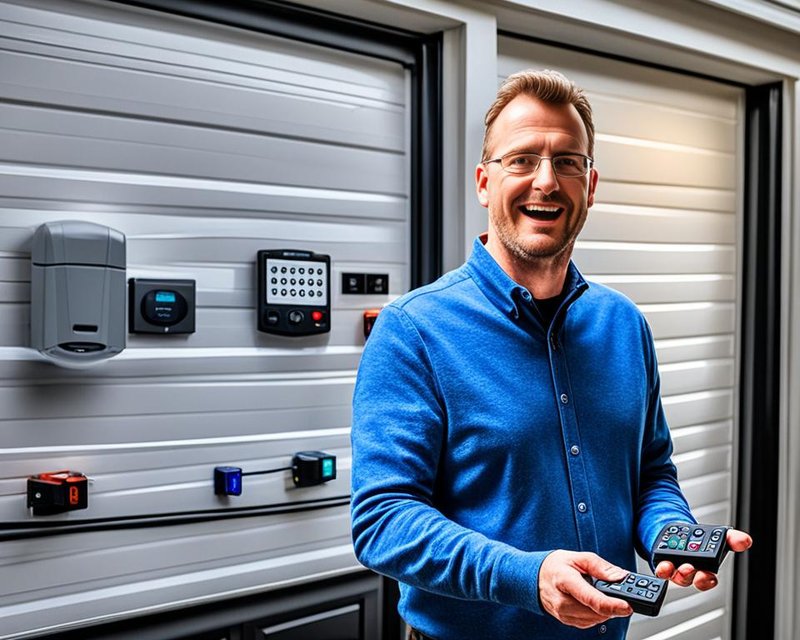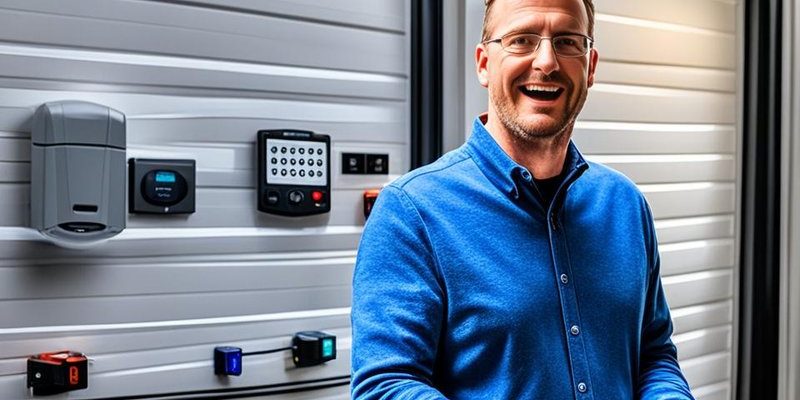
Linear is a trusted brand for garage door openers, known for reliable hardware and straightforward remotes. Programming these remotes isn’t rocket science, but it does require a calm approach, a little patience, and attention to detail. Whether you’ve just moved in, replaced a lost remote, or swapped batteries, knowing the right process can save you headaches—and neighbors from that awkward “can you let me in?” text.
Understanding How Linear Garage Remotes Work
Garage remotes might look simple, but they’re clever little gadgets. Each Linear remote sends a unique code to your door opener, telling it “hey, it’s me—let me in!” The opener and the remote must be on the same page, speaking the same coded language, for the magic to work. If the remote and opener aren’t synced, you get nothing but silence (and maybe some side-eye from your dog).
Linear uses a “rolling code” system for most of their remotes. That’s a fancy way of saying the code changes every time you press the button, which helps keep your garage secure. Some older models use dip switches to set a fixed code, but most modern ones use a learning button and auto-synchronization. If you’re unsure which you have, checking your opener’s control panel (usually overhead in the garage) will clear things up.
Once you understand this pairing, programming the remote is all about making sure both sides are ready to listen and learn. That’s why paying attention to the specific steps for your model matters—a missed step can leave you locked out, wondering why technology hates you.
Gathering What You Need Before Programming
Before diving into programming, let’s set ourselves up for success. Here’s the thing—missing a tiny piece (like a dead battery or a hidden “learn” button) can make the process way more complicated than it needs to be. Think of this like prepping ingredients before you start cooking.
- Your Linear garage remote. Make sure it’s the right model for your opener.
- Fresh batteries. Even if your remote seems fine, weak batteries can cause “phantom” programming issues.
- A ladder. Most opener control panels aren’t exactly within arm’s reach.
- A flashlight. Garage ceilings are rarely well-lit, especially behind the opener motor.
- Your opener’s manual, if you have it. Not required, but tiny diagrams can be reassuring.
Why bother gathering all this? Well, nothing kills your programming confidence faster than realizing you need batteries midway through. Plus, some “learn” buttons are tucked away like the world’s worst Easter eggs. Save yourself the scavenger hunt—get everything ready first.
Step-by-Step Instructions To Program A Linear Garage Remote
Let me walk you through the actual programming steps. Most Linear remotes follow a similar sequence, but always check your manual for model-specific quirks. Here’s the typical process for modern Linear openers:
- Find the “Learn” button. On your garage opener unit, usually mounted overhead, look for a small button labeled “Learn” or “Program.” Sometimes it’s under a light cover or behind a tiny flap. It may be red, yellow, or purple—color doesn’t matter, function does.
- Press and release the “Learn” button. Don’t hold it down—just a quick press. Most openers will flash an indicator light or make a sound, signaling it’s ready to sync. After pressing, you have about 30 seconds to complete the next step.
- Press the desired button on your Linear remote. Hold it for a few seconds. The opener’s light might blink or you may hear a click, confirming the code has paired.
- Test the remote. Try pressing the button to operate your garage door. If it opens or closes, you’ve nailed it. If not, repeat the process—sometimes timing is everything.
Honestly, the most common hiccup? People either hold the “Learn” button too long (which can erase all codes and create a programming mess) or don’t press the remote button quickly enough. If you hit a snag, take a breath, and try again.
Resetting or Reprogramming Your Linear Remote
Sometimes you’ll want to clear out existing codes—maybe you lost a remote, moved homes, or just want a fresh start. Here’s how you reset and re-sync everything.
When you reset your garage opener, you’re erasing all codes, not just one. Any remote or keypad will need to be paired again.
- Hold the “Learn” button on your opener for about 6–10 seconds, until the indicator light goes out. This wipes all paired remotes from memory.
- Release the button and wait a moment. The system is now in a clean state, ready for new remotes.
- Follow the programming steps above for each remote or keypad you want to link.
Don’t worry, you can’t “brick” the opener by doing this. Worst case, you’ll just have to reprogram everything. This is a great move if you’re worried about lost remotes or old tenants having access.
Troubleshooting Common Programming Issues
You might be wondering, what if the remote still isn’t working? Here’s where we get a little detective-like. If the door stays shut or behaves strangely, try these fixes:
- Check the remote’s battery. Even new remotes sometimes ship with weak batteries. Swap it out and try again.
- Make sure you’re pressing the correct button. Multi-button remotes can be confusing—each button may control a different door or function.
- Confirm you’re within range. If you wander too far, the code won’t get through. Stay relatively close to the opener.
- Inspect the opener’s antenna. A bent or missing antenna wire can block the signal.
- Double-check the “Learn” button timing. If you wait too long after pressing “Learn,” the opener times out.
If none of these solve the issue, consider a deeper reset or check if your remote is compatible with your current opener. Sometimes mixing brands or generations doesn’t play nice—Linear remotes are happiest when paired with Linear openers.
Comparing Linear Garage Remotes With Other Brands
Here’s the thing—Linear remotes are reliable, but they aren’t the only players in town. You might be tempted by universal remotes if you want to control multiple openers or brands.
Universal remotes often promise cross-compatibility, but they come with their own headaches: tricky programming, spotty range, and (sometimes) less security. Linear-branded remotes stick to their own language and security protocols, minimizing hiccups and maximizing reliability. Sure, they might cost a bit more, but you’re paying for peace of mind and fewer troubleshooting sessions.
If you have multiple garage doors or like the flexibility, universals can be handy. Just know that, in most cases, the simplest experience comes from sticking with the original brand.
Replacing Batteries And Maintaining Your Linear Remote
Remote not responding as quickly as it used to? Typically, the first step is swapping out the battery. Linear garage remotes usually use standard coin or AA/AAA batteries. Always check the back panel for the type—forcing the wrong battery size is a one-way ticket to frustration.
To replace:
- Open the battery compartment. Usually, there’s a small screw or sliding panel.
- Remove the old battery and insert a new one with the correct polarity. Messing this up can fry the remote.
- Close the panel and test the remote. If it still doesn’t work, try reprogramming it—sometimes losing power resets the remote’s memory.
It’s a good habit to swap batteries once a year, even if things seem fine. Weak batteries can cause weird, intermittent problems that look like programming errors but are really just a power issue.
Safety Reminders When Working With Garage Remotes
Honestly, garage doors can be surprisingly dangerous if you’re not paying attention. Keep kids and pets clear while programming or testing remotes. The door can move without warning once you hit the sync button.
If your opener has a safety reversal system, double-check that it’s working after you program the remote. Just wave a broomstick under the door while it’s closing; the door should pop right back up. If not, address the issue before regular use.
Also, don’t climb wobbly chairs or overreach for the opener unit. Use a sturdy ladder, and ask for help if you need it. No remote is worth a twisted ankle!
Final Thoughts On Linear Garage Remote Programming
Programming a Linear garage remote doesn’t have to feel like decoding alien technology. With a little patience and the right steps, you’ll get everything synced and working smoothly. Taking your time, gathering the right tools, and understanding the process is what saves you from repeat trips up the ladder (and those “why isn’t this working?” moments).
If you run into issues, step back, breathe, and work through the troubleshooting checklist. Most problems have a simple fix—weak batteries, timing, or a missed step. And if you ever need to refresh everything, resetting and reprogramming is safe and straightforward. With these best practices, your Linear garage remote will be one less thing to worry about at home. Doors open, stress closed—that’s the goal.
